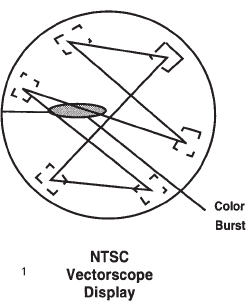Some countries use a different system
PAL
The system you have been studying up to now is called the NTSC system. It was named for the National Television Systems Committee, which created it in 1953 when the United States adopted its color television system. NTSC is used in North America, Japan, and many other parts of the world.
When the countries of Europe decided to adopt a color TV system, however, NTSC was 10 to 15 years old, and its weaknesses and problems were well known. In addition, technology had made long strides that allowed the Europeans to develop television systems that were superior to NTSC. The most commonly used system besides NTSC was developed in Germany and is called PAL for Phase Alternate Lines. The luminance and color detail of the NTSC system are not really very good. The PAL system improved luminance detail by increasing the signal bandwidth and the number of horizontal scanning lines to 625. The bandwidth is the frequency space that is needed to send a signal through the air or a cable. The wider the bandwidth, the more information can be sent. The frame rate for PAL, however, was dropped to 50 fields and 25 frames per second to match Europe's electrical frequency of 50 Hz. The waveform monitor for PAL looks the same as the NTSC waveform display. However, PAL systems set up the pedestal (in Europe they call it setup, not pedestal) at 0 instead of 7.5 as used in NTSC. This gives PAL better contrast and deeper blacks.
Except for some minor details, the color signal principles for PAL are the same as those for NTSC. One problem associated with NTSC, however, is that recording and signal transmission can induce errors in the relationship between the color burst and the color information. The PAL process averages out and cancels those errors. In PAL, the phase of the color signal is reversed by 180° from line to line (thus Phase Alternate Lines). As a result, PAL television sets always reproduce the correct hue and do not have tint or hue controls, as NTSC television sets commonly have.
PAL systems are used predominately in continental Europe, Russia, the United Kingdom, China, Australia, and some African countries. A 30-frame, 525-line version of PAL, called PAL-M, is used in Brazil.
The PAL and NTSC vectorscope displays look very similar. Since each line of video in the PAL system uses a color burst that is out of phase with the color burst displayed on the previous line, the vectorscope has to display both. That is the only obvious difference in the PAL vector display.
1. NTSC vectorscope display.
2. PAL vectorscope display.


